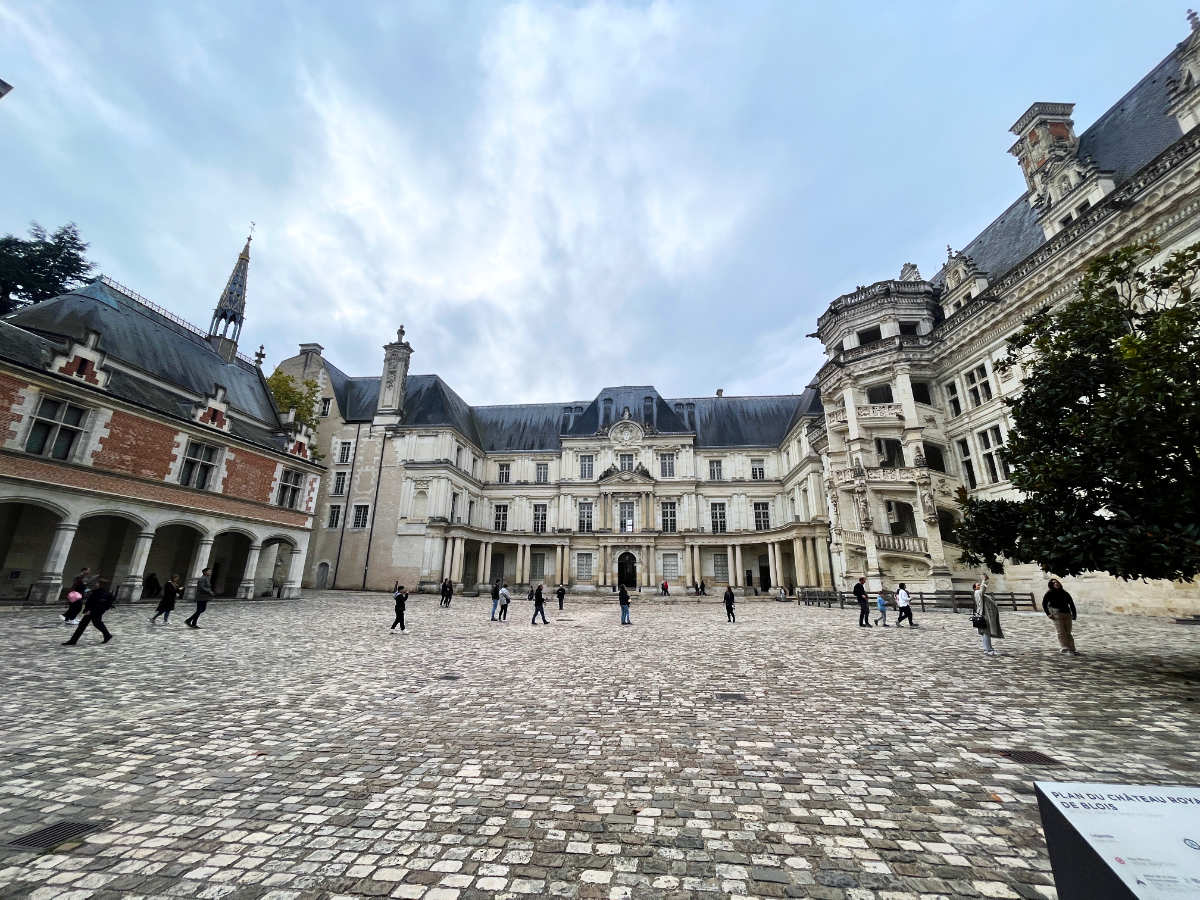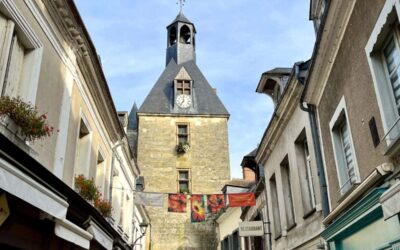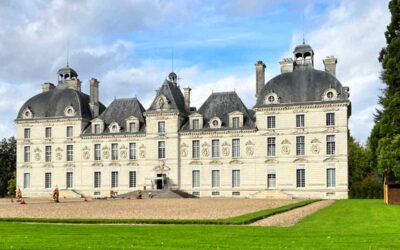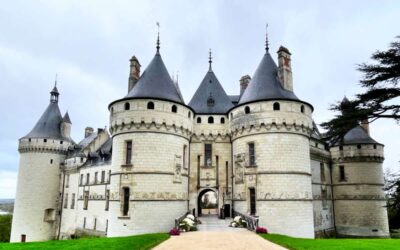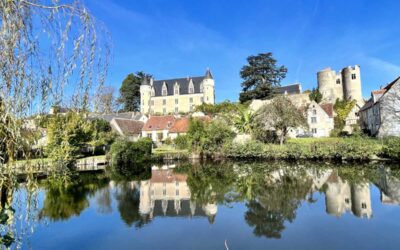The city of Blois on the banks of the Loire River is the quintessential charming small town in the Loire valley. Located in the Loir-et-Cher department, Blois is famous for the multitude of stunning royal châteaux that dot the landscape in this part of France all within a 1/2 drive of the town.
As part of the Duchy of Orléans, Blois became a royal stronghold when Louis II of Orléans unexpectedly became King Louis XII of France.
It is within 30 minutes of several famous châteaux in the area like Château de Chenonceau, Château Royale d’Amboise, Château de Chaumont, Château de Chambord, and Château de Cheverny, near the cities of Amboise and Tours. And it is about 3 hours away from Paris, making it ideal for a day trip from the city.
And the city of Blois has its own royal past, at the Château Royale de Blois. Indeed, this was royal palace for centuries before some of the other palaces in the area. So let’s have a look at why visitors flock to Blois, from its history to its attractions, shall we? Allons-y!
- History of Blois
- Things to do in Blois
- 1. Château de Blois
- 2. Cathédrale Saint-Louis de Blois
- 3. Maison de la Magie
- 4. Bishopric rose garden
- 5. Escalier Denis Papin
- 6. Place Louis XII
- 7. Foix Tower
- 8. Fondation de doute
- 9. Rue du Puits Châtel
- 10. Museum for resistance, deportation and memory
- 11. Église St. Nicolas
- 12. Tour Beauvoir
- 13. Museum of Natural history
- 14. Loire Valley châteaux
- 15. Wine tastings
- How to get to Blois?
- How easy is it getting around?
- How many days should you spend?
- Where should you stay?
History of Blois
Historically, large settlements have been found in Blois dating back to the Gallo-Roman era. The town sits on the road linking two ancient cities, Chartres and Bourges. Its location on the Loire river will hillside cliffs looking down over the Loire valley also made for a good defensive position.
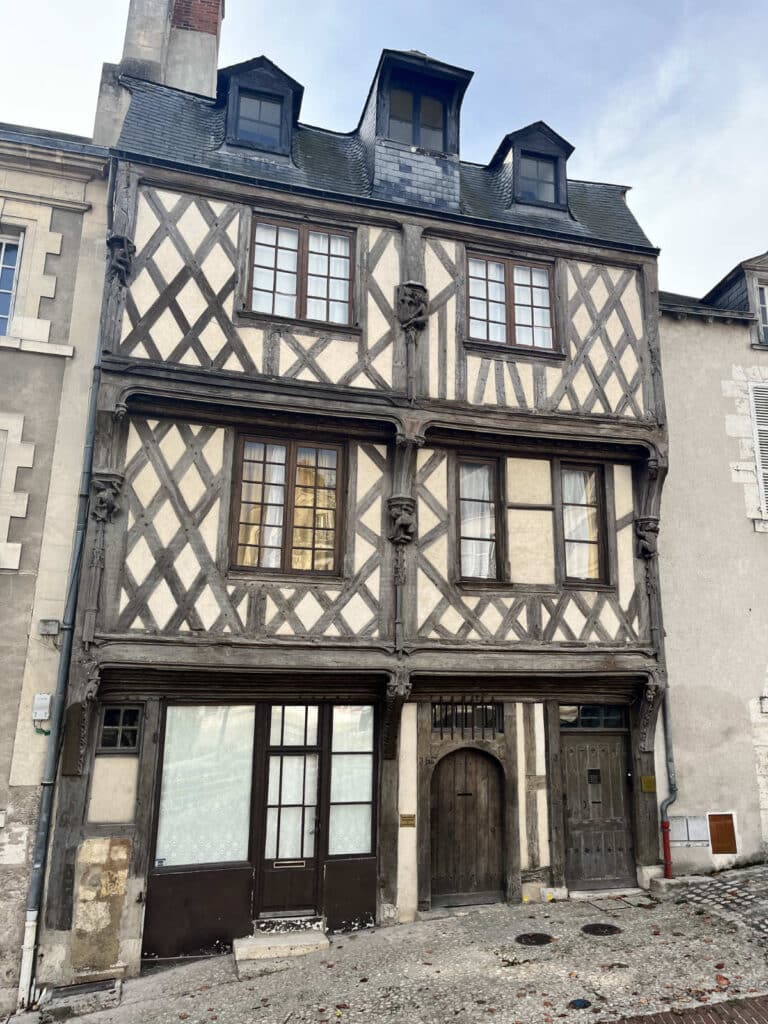
The city was the capital of the county of Blois created on 832. It became part of the Royal domain of France in 1498, when Count Louis II of Orléans became King Louis XII of France.
Louis was never meant to be King. He succeeded his second cousin once removed and brother-in-law, Charles VIII, who died childless in 1498. With him becoming King, Blois was now a royal city.
Along with being the seat of several French Kings, Blois is also known for the time Joan of Arc prepped her troops here in 1429 as she prepared to confront the English who had taken nearby Orléans. It is here that she was blessed by the Archbishop of Reims at the Cathedral of Blois before departing on one of her most famous victories.
During the Renaissance, Blois was the official residence of the King of France. However, as Paris gained in strength, other châteaux like Fontainebleue and eventually Versailles became the seat of royal power.
Blois was occupied during WWII and remained so until liberated by American soldiers and their allies in August 1944. After surviving occupation and repeated bombardments, Blois today is a thriving city in the Loire Valley.
Things to do in Blois
1. Château de Blois
The Château Royal de Blois was once a royal home. The original building here dated back to the 9th century owned by the Counts of Blois. In 1397, it was given by King Charles VI of France to the Orléans family, a cadet branch of the royal family.
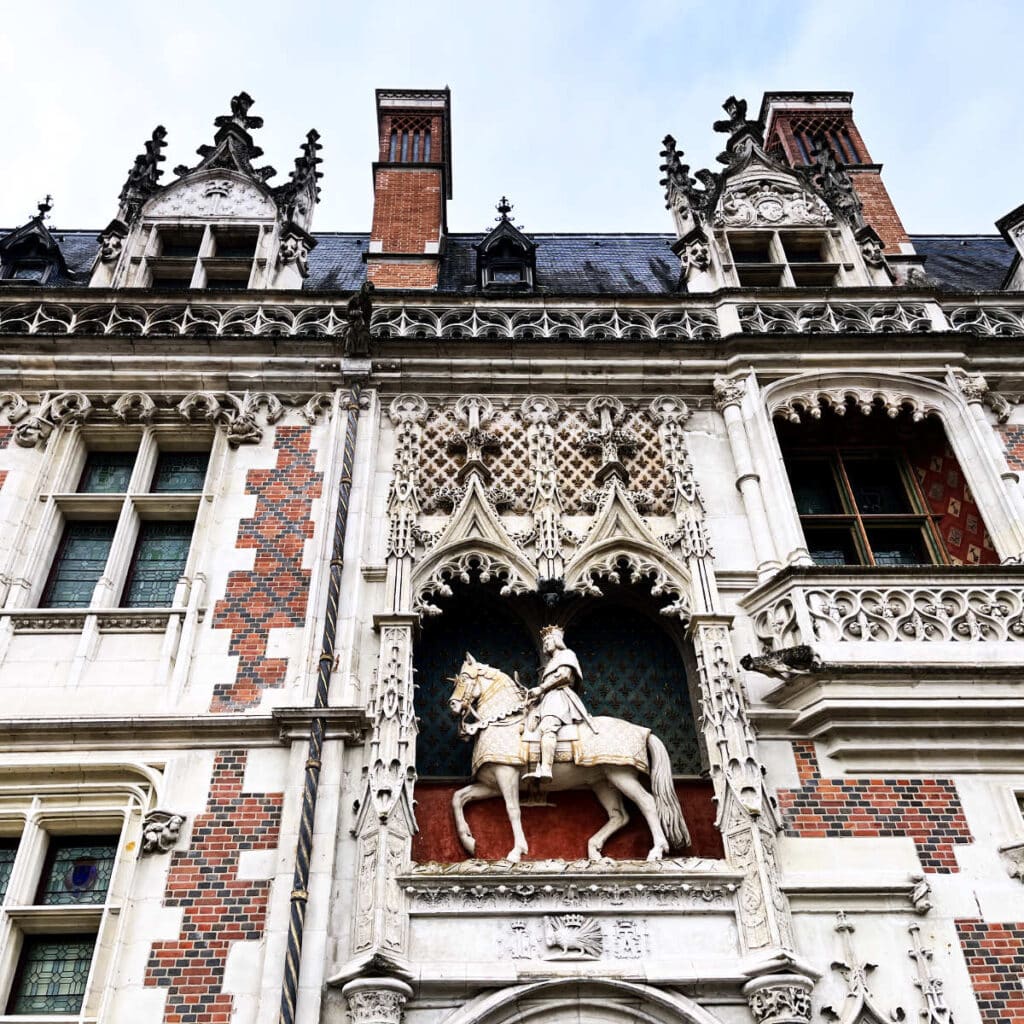
Notably, it was inherited by Charles d’Orléans, a royal prince and poet, who was captured at the Battle of Agincourt and imprisoned in England. He was held for 25 years as a hostage in England, and when he returned to his beloved Blois, he renovated much of the building.
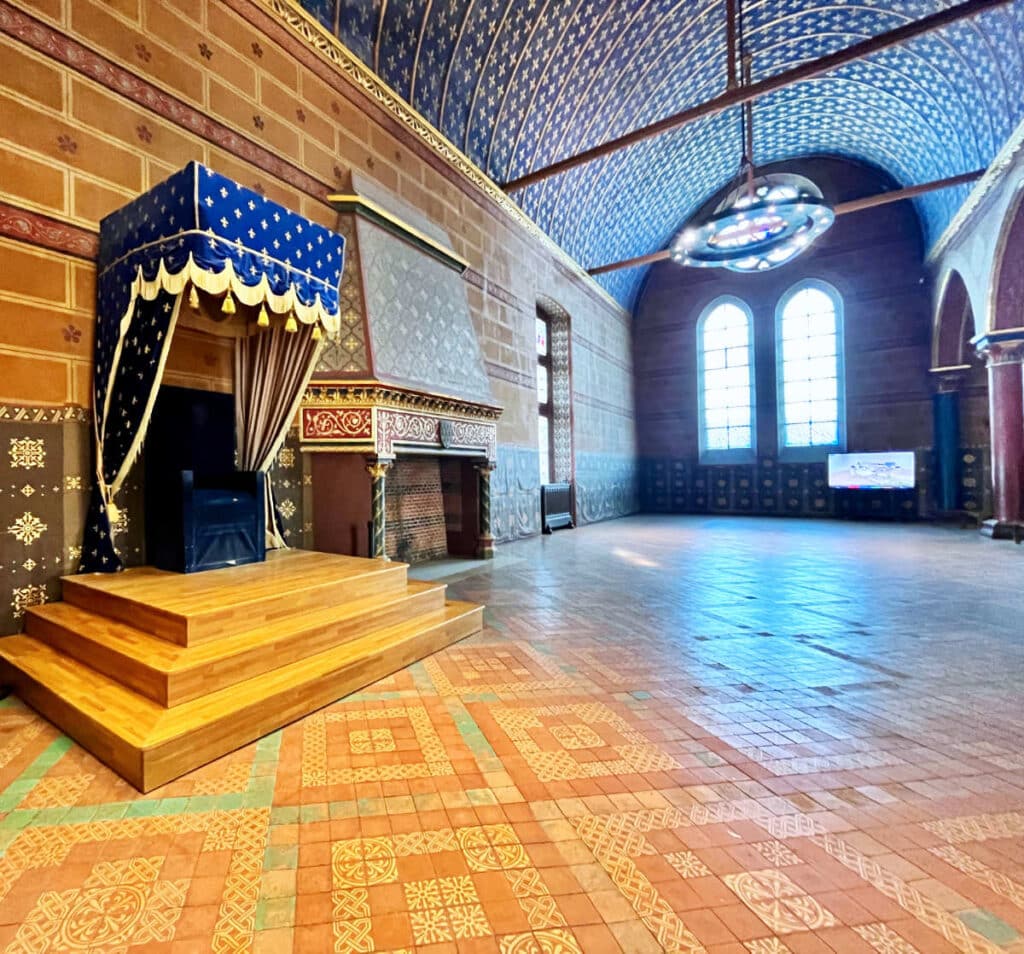
But it would be his son who would become King, Louis XII and his wife Anne of Brittany, and later his granddaughter Claude and her husband François 1er who would renovate much of the Château de Blois to what we see today.
With decorations spanning its history, the château is a must for any visitors to the city of Blois. The Loire Valley châteaux like the one in Blois are officially recognized on the UNESCO world heritage list. You can read more about visiting the Château de Blois here.
2. Cathédrale Saint-Louis de Blois
The Blois Cathedral is located in the center of the city, about a 7-minute walk away from the Château de Blois. Like other cathedrals in France from that era, construction originally began in the 12th century but the current facade and bell-tower date to the 16th-century.
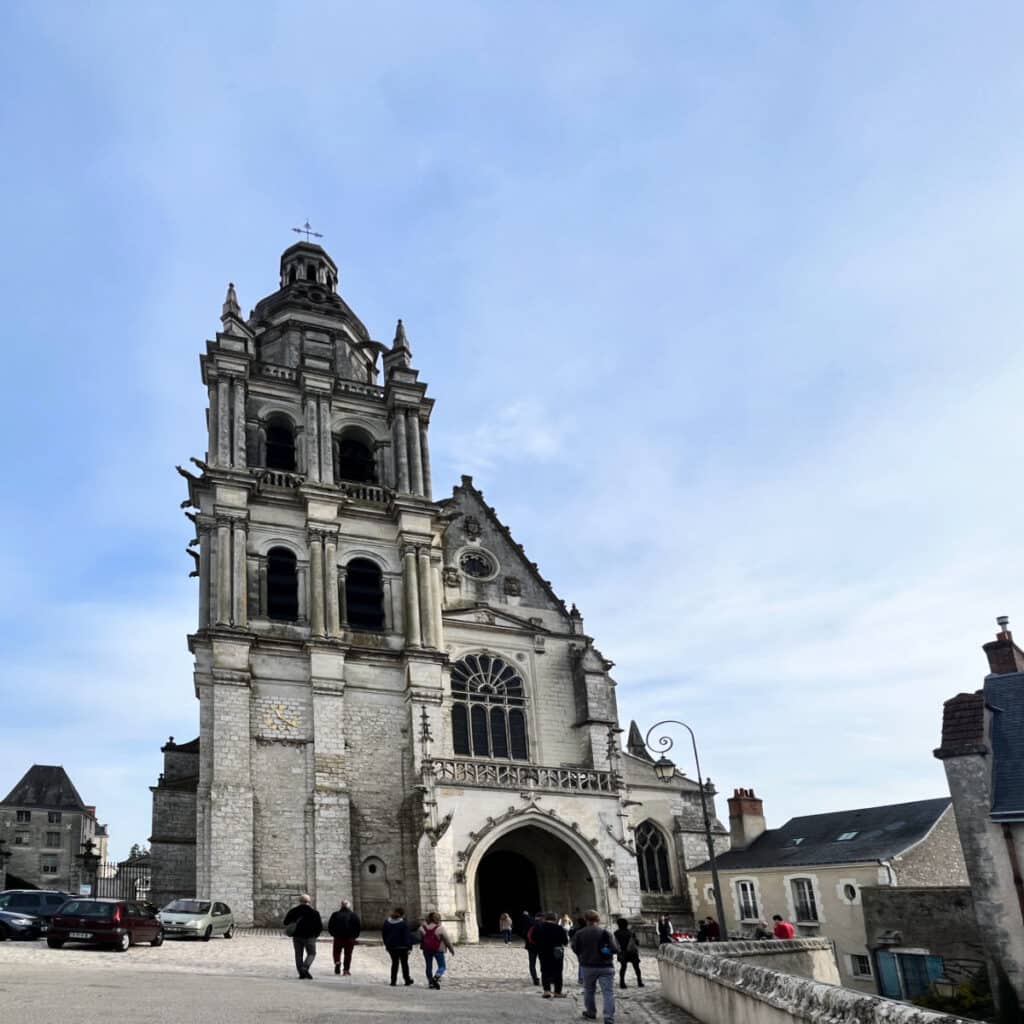
More renovations took place in the 17th century under the Sun King Louis. He dedicated the cathedral to his predecessor, the 13th century Saint King Louis, one of the most famous saints in France.
As Blois was occupied by the Germans during WWII, Allied bombardment destroyed most of the stained glass windows in the cathedral, which has now fully been restored.
Traces of a Carolingian church were discovered there in 1927 and the Crypt of Saint Solenne is located in the crypt.
3. Maison de la Magie
Just across from the Château de Blois is the Maison de la Magie, meaning “House of Magic”. With 3 golden dragons sticking out the windows, it is building that definitely catches the eye.
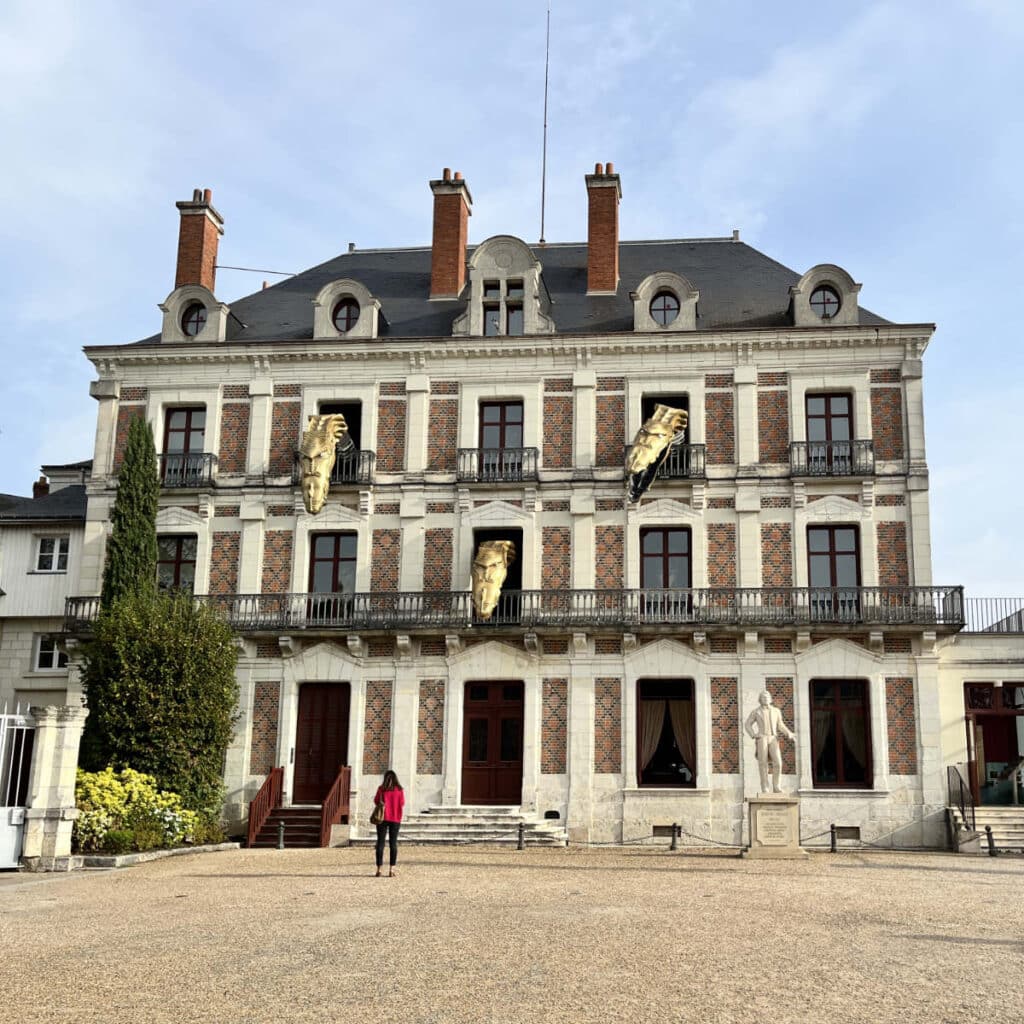
The building is named after 19th century French magician Jean-Eugène Robert-Houdin, whose home this was. Robert-Houdin is considered the “father of modern magic”, inventing many tricks and techniques that are still around today.
American magician Harry Houdini (born Ehrich Weiss) adopted the stage name of “Houdini” in honour of Robert-Houdin.
The building is officially recognized as a “Museum of France” and is a public museum holding several collections of magic and a site for permanent performing arts.
4. Bishopric rose garden
Behind the Cathedral of Blois is the Bishopric rose garden. It was once a “garden of medicinal plants”, and is now filled with a variety of plants and rose bushes.
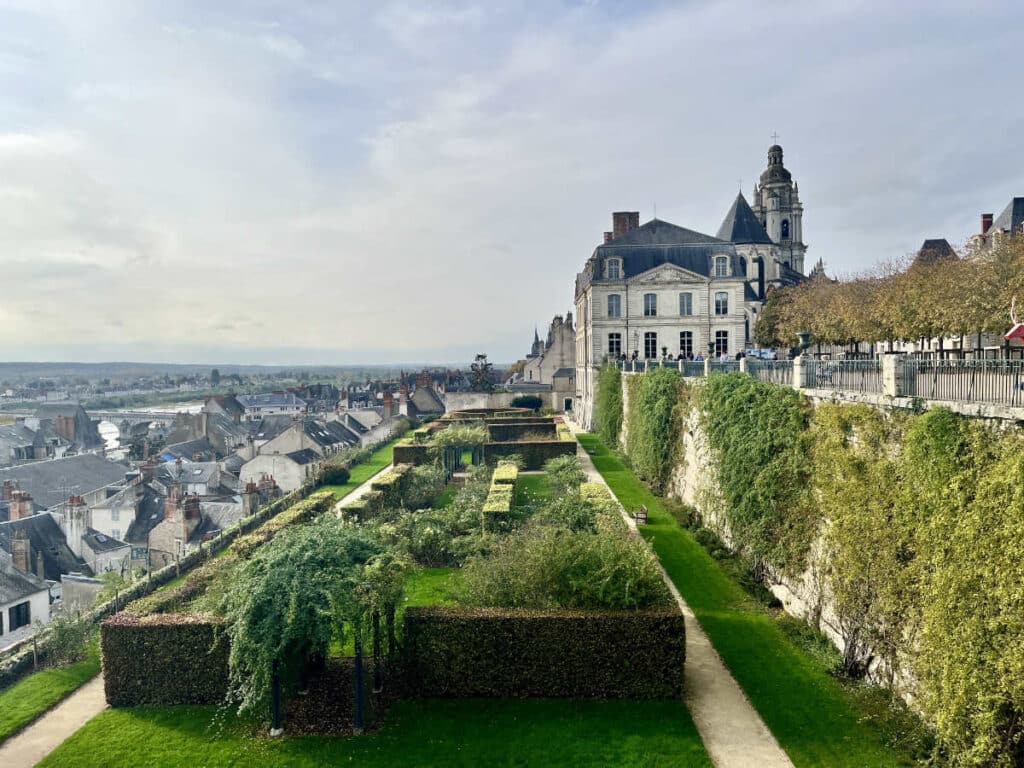
The garden has a low terrace that overlooks the lower town towards the Loire river. The gardens are free to enter, however they are not open all the time. Check opening hours before heading over.
5. Escalier Denis Papin
About 5 minutes away from the Château de Blois is the large staircase dedicated to the local Bleois legend Denis Papin.
Denis Papin was a 17th century French physicist and inventor, best known for his pioneering invention of the steam digester. Eventually, his invention would pave the way for the pressure cooker and the steam engine.
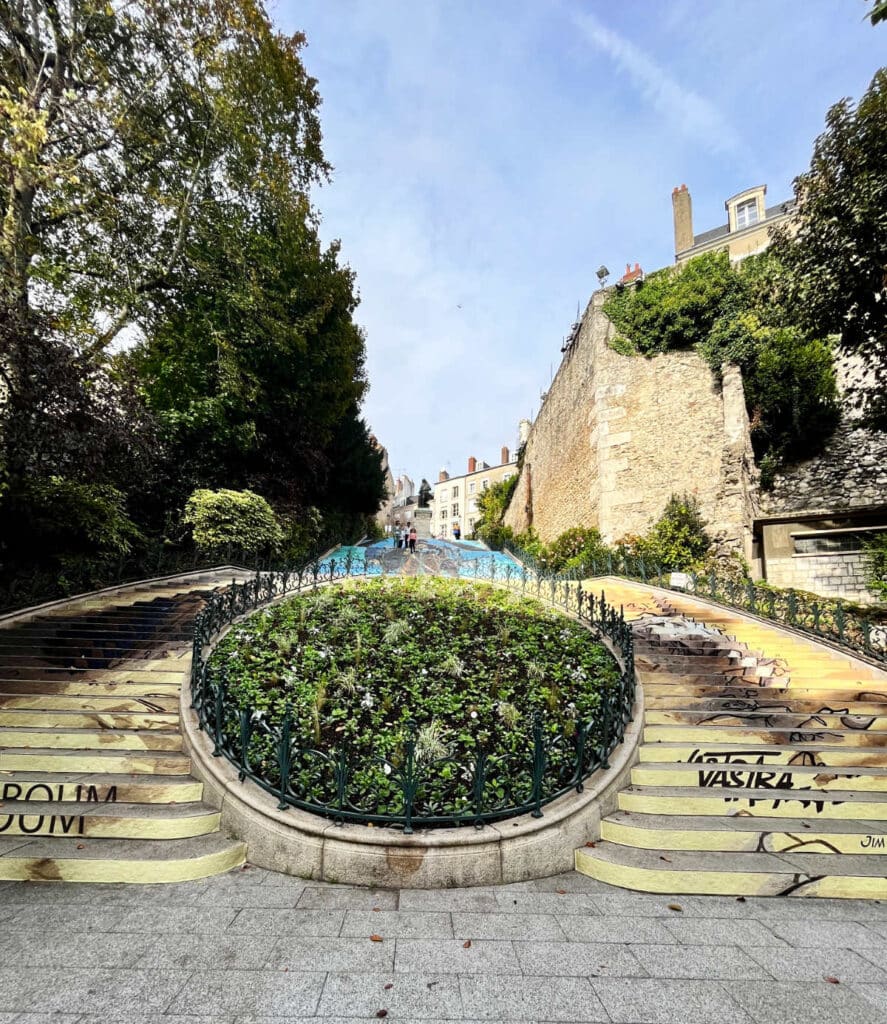
The staircase is regularly repainted by local artists using various popular cartoons and comic books as inspiration.
6. Place Louis XII
At the bottom of the hill where the Château de Blois is located, is the large Place Louis XII. It is a vast open space that has many restaurant terrasses in the vicinity.
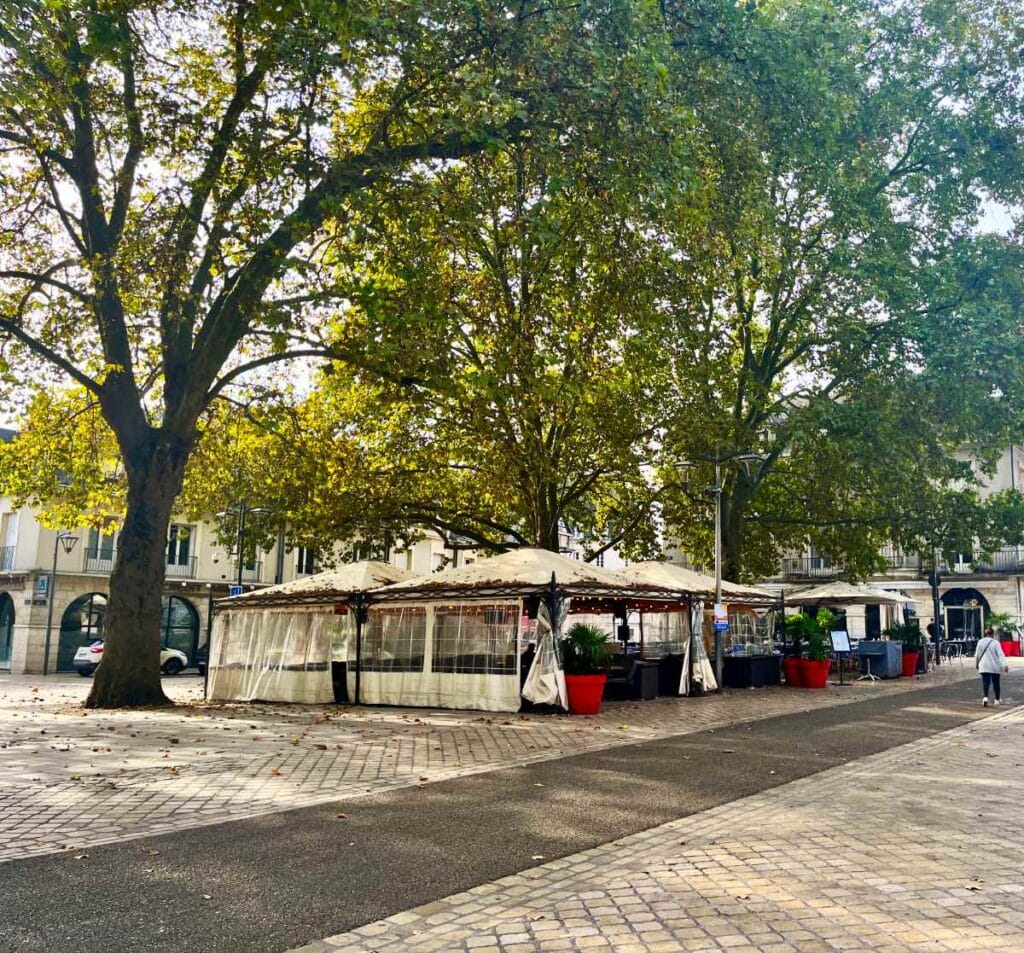
If you happen to be visiting Blois on a Sunday or a holiday, this is the place where you are most likely to find an open restaurant as it usually attracts a lot of tourists.
There is everything from a crêperie to Italian food, so you are bound to find something to please everyone.
7. Foix Tower
In the courtyard of the Château de Blois, you will see the large Foix tower at one end overlooking the city.
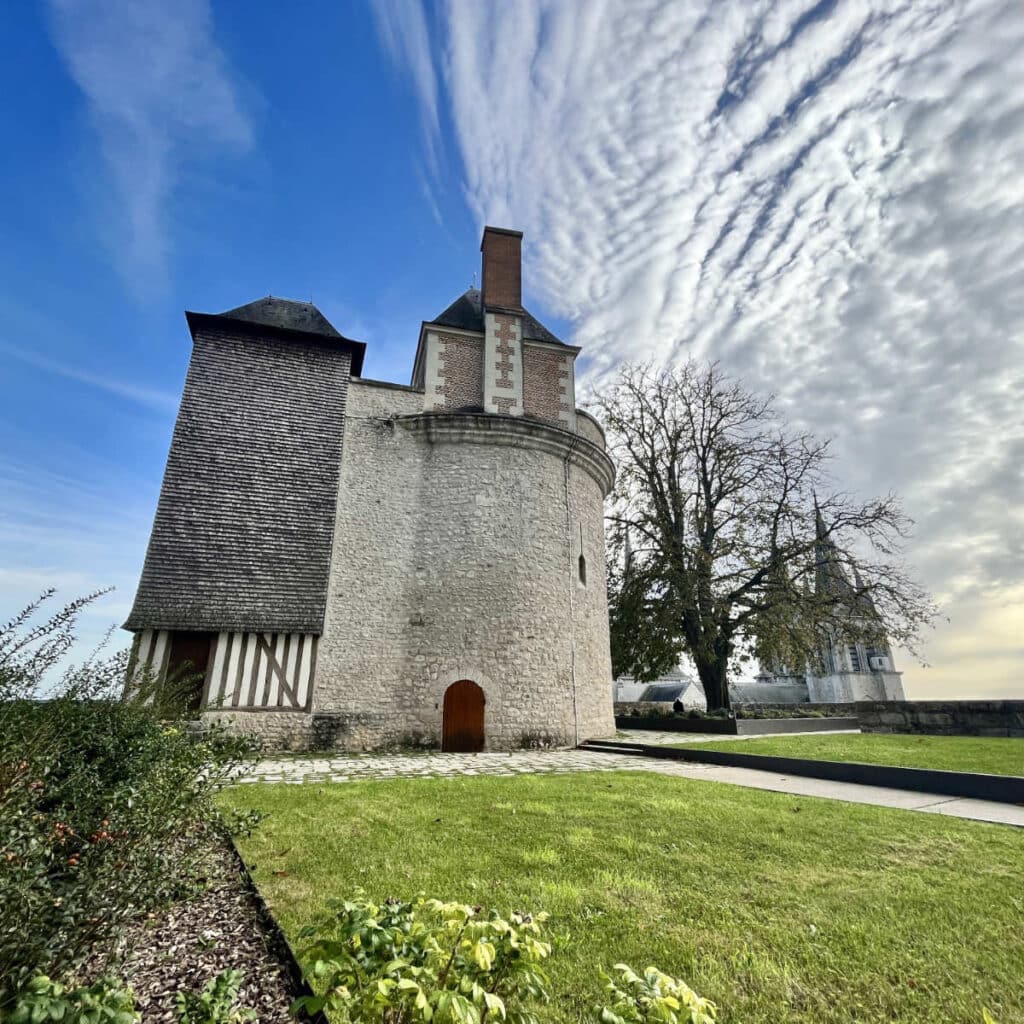
It is the ancient part of a 13th century medieval fortress that once stood here to guard the city of Blois.
In the 17th century after it was no longer needed as a defensive tower, the Orléans family (branch of the French royal family) turned it into an observatory of astronomical science.
The tower is only rarely open to visit, but you can still see beautiful views of the city from its base.
8. Fondation de doute
In the north of the city, is the “traditional vs modern” building called the Fondation de doute, meaning “foundation of doubt”. It is a contemporary art center located in Blois that showcases an eclectic variety of multimedia works in a brightly colored space.
It is not open all the time depending on the season, so check opening hours before heading over. (It is about a 10-minute walk away from the Château de Blois.)
9. Rue du Puits Châtel
One of the emblematic streets in the old historical part of Blois is the street called Rue du Puits Châtel.
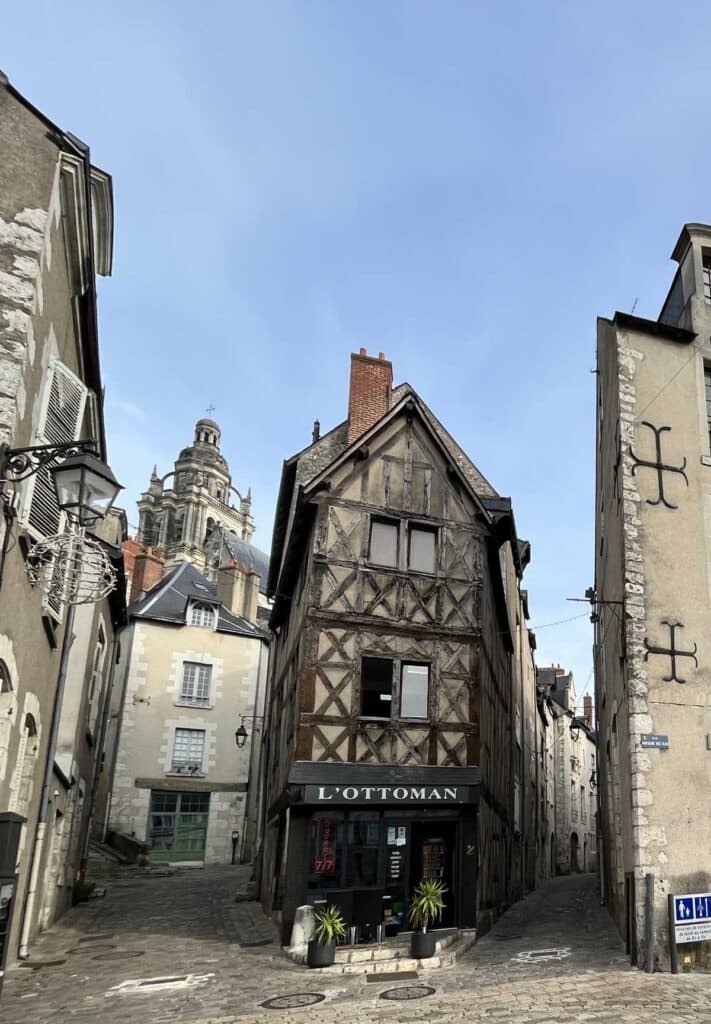
With narrow cobblestone streets and beautiful architecture, it will transport you back to the Middle ages. There are several restaurants nearby as well, on Rue de la Foulerie and Rue Jeanne d’Arc, making it a lovely place for lunch or dinner.
10. Museum for resistance, deportation and memory
As the city of Blois was occupied by the German Reich for 4 years during WWII (1940-1944), a museum stands to commemorate the struggles of the people living here in that period.
There are several documents and objects displayed showing conditions of daily life during the occupation, as well as the stories of those who fought to stand resistance to the invaders.
11. Église St. Nicolas
One of the most striking buildings in the skyline of Blois is the Église St. Nicolas church.
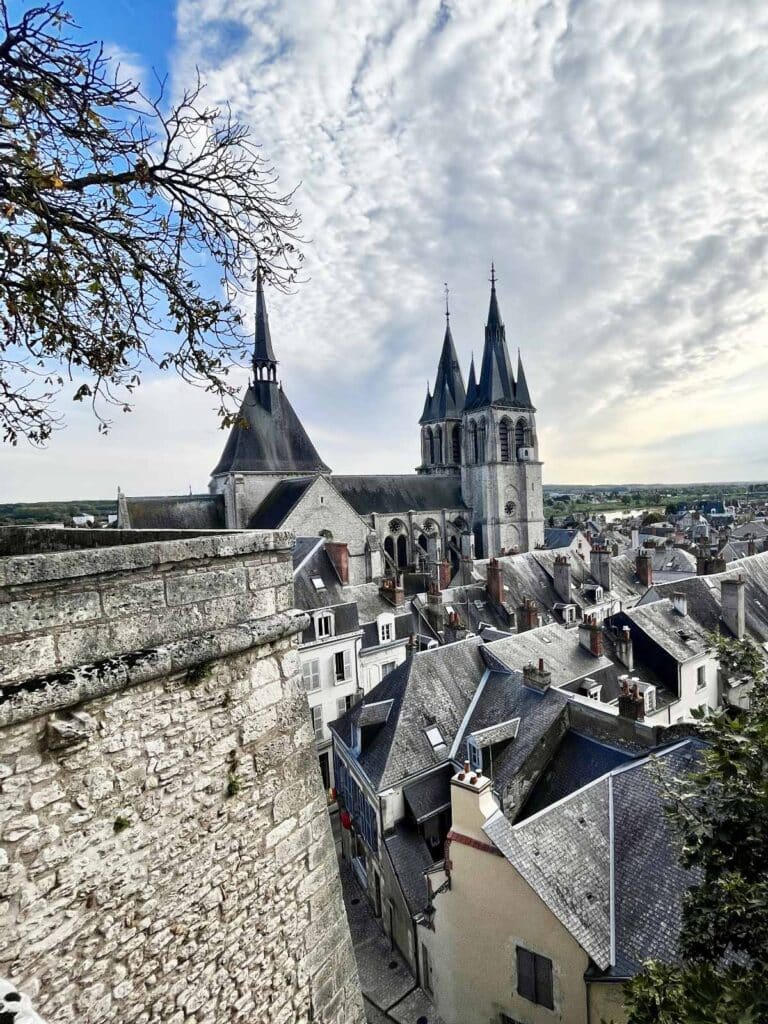
It was originally part of an abbey and monastery when built in the 12th century. It became a place of pilgrimage in the Middle ages because it purports to hold the relics of Saint Lubin, Saint Laumer, Saint Mary the Egyptian and a fragment of the cross of Christ.
12. Tour Beauvoir
Built in the 11th century, the Tour Beauvoir is one of the oldest buildings in the city of Blois. It is listed a large square tower and is listed as a historic monument in France.
Today, it hosts special events and even operates as a rental property at times for overnight stays.
13. Museum of Natural history
If you enjoy nature, Blois has a small natural history museum focusing on the biodiversity around the Loire Valley. From animals and fossils, to the different types of trees and plants grown in the area, there are several exhibits aimed at kids as well as the young at heart.
14. Loire Valley châteaux
The Loire Valley is famous for its multitude of châteaux and the city of Blois is right in the heart of it. The châteaux of Chambord, Chenonceau, Chaumont and Chéverny are on either side of Blois and the city of Amboise (with the Château Royale d’Amboise) is also within 30 minutes.
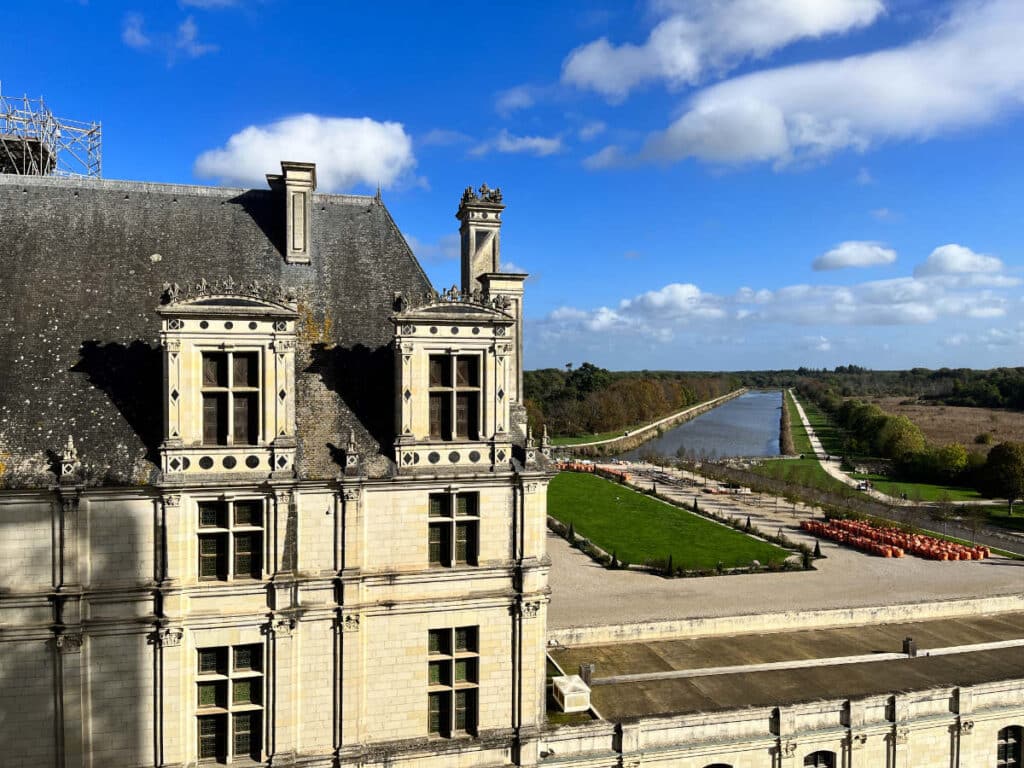
The Château de Villandry is about 45 minutes away, near the city of Tours, also making for easy access. Along with those famous châteaux and royal palaces, there are several smaller châteaux for nobility who lived in the area and built housing near the seat of power during the Renaissance.
In all, you can easily spend a week in the area, going from château to château and exploring the area. (For those travelling with children, there is also the Zoo de Beauval at Saint-Aignan within 30 minutes of Blois, if you want to a break between the châteaux.)
15. Wine tastings
One of the local specialties in and around the area of Blois is the Loire valley wines. Although not as famous as other French wines, they have a following of their own and are gaining in popularity.
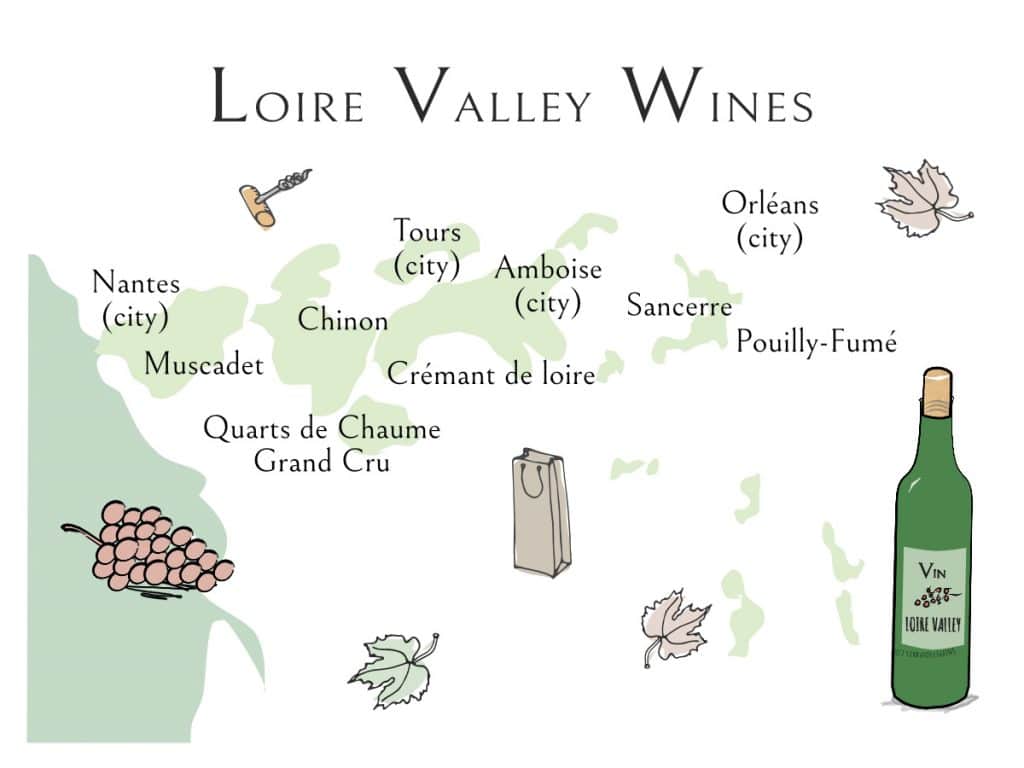
The Loire Valley mostly produces white wines, but there are some red wiens as well. The area is the second-largest concentration of sparkling-wine producing vines in France after the Champagne region.
Having French royalty like François I and Catherine de Medici nearby as well as the British royals, meant that their courtiers and followers all got used to drinking wines from the Loire Valley, and effectively marketed the wines to other nobles and royals around France and Europe.
There are many wine-tasting tours that will combine with chateaux visits in the Loire Valley.
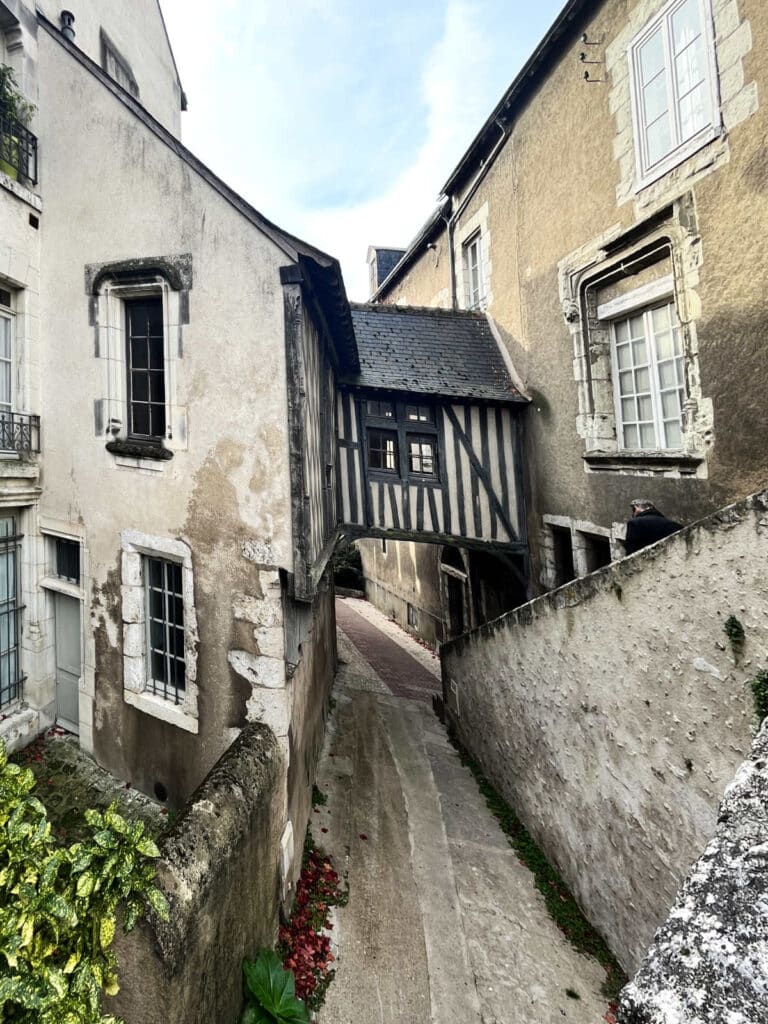
How to get to Blois?
The city of Blois is quite accessible from Paris by car and by train. It takes approximately 1h45 to drive from Paris depending on traffic. By train, you can take a TER train from Paris’s Austerlitz station to Orlèans and then change trains to Blois (in the direction of Tours). The trip is approximately 2 hours.
There are also various tour options leaving from Paris which head to the Château de Blois and other sights in the area. Certain tours combine wine-tasting and sightseeing. You can see the tour options to the Château de Blois here.
How easy is it getting around?
The city of Blois is quite walkable, and there are several large parking lots that you can park your car at and visit all the centrally located sights. One of the larger parking lots is right under the Château de Blois, making for easy access to all the sights.
How many days should you spend?
I would suggest spending a day in Blois, with about 1/2 day to visit the city and 1/2 day to visit the Château. You can choose to base yourself here and stay overnight for a few days as there are several châteaux in the surrounding area including Chaumont, Chéverny, Chenonceau and of course Chambord.
Where should you stay?
There are several wonderful hotels in Blois around the center of the city. Some recommended hotels are:
- €€€ – ibis Blois Centre Château
- €€€€ – Hotel Mercure Blois Centre (with pool)
- €€€€€ – Fleur de Loire (on the quai across from the old city center of Blois)

If you enjoyed that article, you may like to read more about traveling around the Loire Valley. A bientôt!
